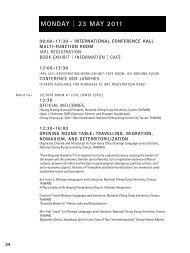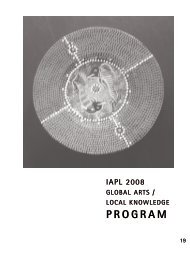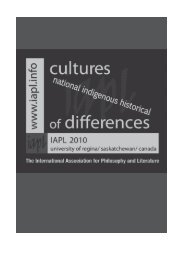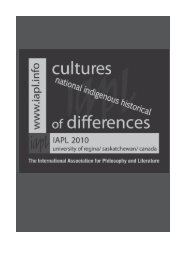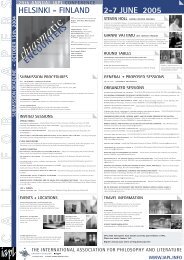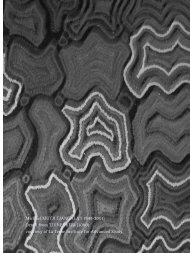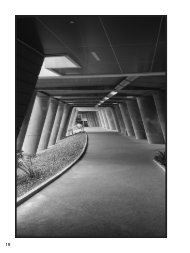IAPL2012-CB-0531-052.. - The International Association for ...
IAPL2012-CB-0531-052.. - The International Association for ...
IAPL2012-CB-0531-052.. - The International Association for ...
Create successful ePaper yourself
Turn your PDF publications into a flip-book with our unique Google optimized e-Paper software.
KADRIORG PALACE<br />
<strong>The</strong> Kadriorg palace and park were founded by the Russian czar Peter I. According to<br />
the designs of the architect Niccolo Michetti, invited from Rome, the palace was built<br />
after the Italian villas, consisting of a main building and of two annexes.<br />
<strong>The</strong> well-preserved great hall is one of the best examples of Baroque architecture not<br />
only in Estonia but also in the whole Northern Europe. Besides Russian and Italian<br />
artists, masters from Stockholm, Riga and Tallinn took part in its building work. <strong>The</strong><br />
two-storied hall is decorated with rich stucco work and ceiling paintings. <strong>The</strong> vestibule<br />
and some other rooms in the main building, as well as some of the stoves have retained<br />
their 18th-century appearance.<br />
<strong>The</strong> park was named Kadriorg (Catherine’s Valley) after the empress Catherine I. Most<br />
of the Russian rulers, from Peter’s daughter Elizabeth, to the last Romanov emperor<br />
Nicholas II, have visited this imperial summer residence.<br />
From 1921 the Estonian Museum in Tallinn was situated in the palace. In 1928 it was<br />
reorganized into the Art Museum of Estonia. From 1929 the palace served as the residence<br />
of the Estonian head of state (from 1938 president). <strong>The</strong> building was renovated<br />
in 1933-34. <strong>The</strong> banqueting hall after the design of the architect Aleksander Vladovsky<br />
was constructed at the back of the palace. Some rooms were refurnished in Estonian<br />
national romantic style after the designs of the architect Olev Siinmaa. From 1946 until<br />
1991 the palace housed the main building of the Art Museum of Estonia. Due to the<br />
deterioration of the building, large restoration works were started. <strong>The</strong> government of<br />
Sweden supported the works that lasted over 9 years, with 21 million Swedish kronor.<br />
On July 22, 2000 the Kadriorg Art Museum, branch of the Art Museum of Estonia, was<br />
opened in the renovated palace. Besides exhibitions, concerts, theatre per<strong>for</strong>mances<br />
and receptions, as well as lectures, tours and introductions of art works take place in<br />
the museum<br />
108



